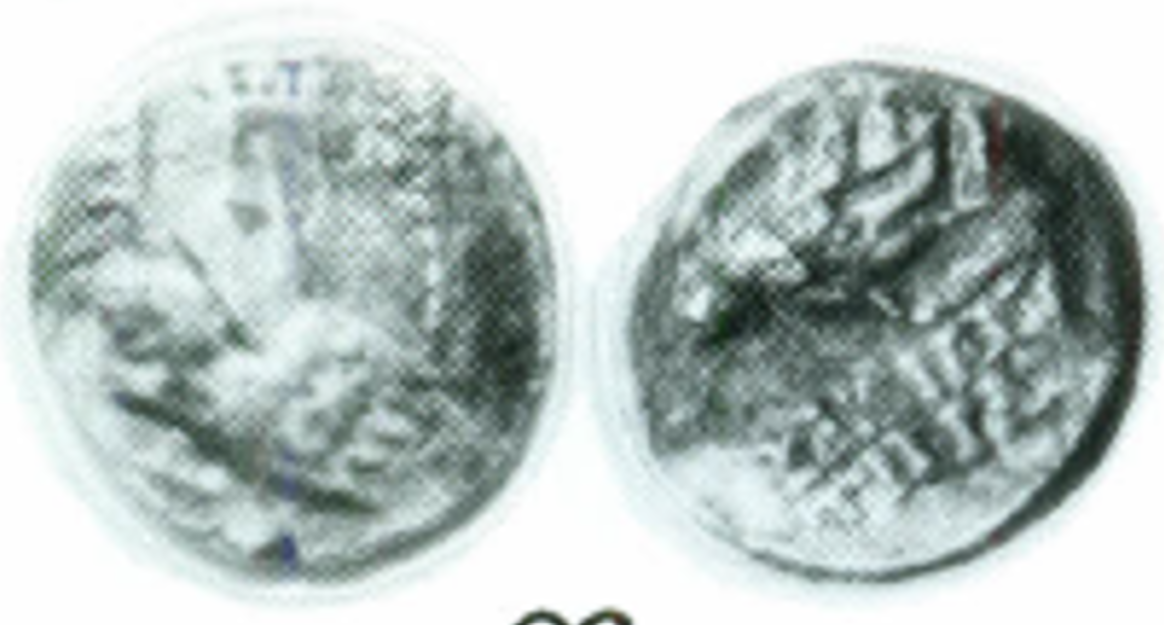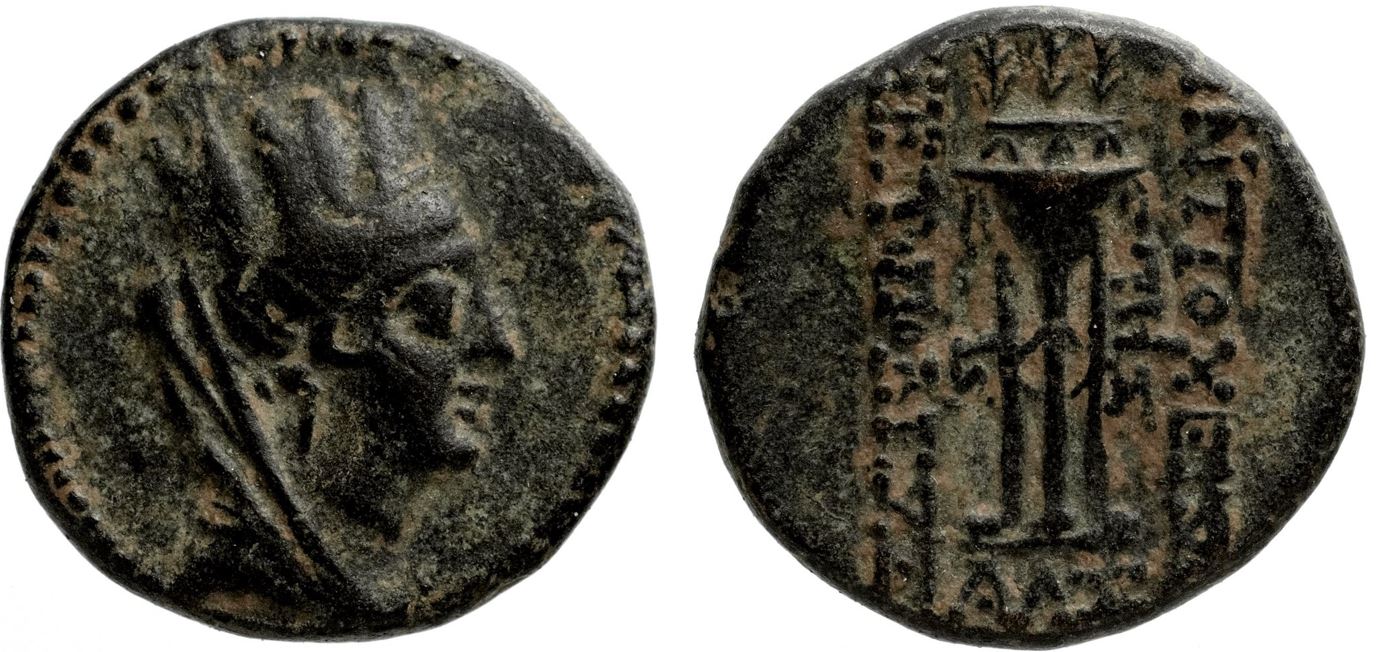80 BCE - 68 BCE | BAΣIΛEΩΣ BAΣIΛEΩN TIΓPANOY
Overstriking coin
Tigranocerta_over_Antioch_(Nercessian_1996,_n°96).png
Overstruck variety
Antioch Tyche Tripod.JPG
[1]
Description
| ObverseInscription or printing placed on the obverse.:
|
Bust of Tigranes II to right, wearing Armenian tiara decorated with a star between two eagles and tied with a diadem, drapery on shoulders. Border of dots.
|
ReverseInscription or printing placed on the reverse.:
|
BAΣIΛEΩΣ BAΣIΛEΩN TIΓPANOY Heracles/Vahagn standing, holding lion's skin and club. In field, monograms.
|
Mint and issuing power
Chronology
| FromIdentifies the initial date in a range assigned in a numismatic context. 80 BCE toIdentifies the final date in a range assigned in a numismatic context.. 68 BCE
|
Hellenistic 323-30 BC  periodTime period of the numismatic object. periodTime period of the numismatic object.
|
Physical description
MetalThe physical material (usually metal) from which an object is made.: Bronze 
|
WeightWeight of the numismatic object (in grams). in grams: 4.164.16 g <br />4,160 mg <br />
|
DenominationTerm indicating the value of a numismatic object. Examples: tetradrachm, chalkous, denarius.: tetrachalkon 
|
|
| DiameterDescribes diameter of an object (in mm).: 1818 mm <br />1.8 cm <br />
|
|
References
| Coin referenceReference of the Coin:
|
Nercessian, 1995, n° 74, Nercessian, 1996, p. 54, n° 96.
|
Coin series referenceReference to coin series study:
|
Bedoukian 19781Bedoukian 1978, n° 99-103 ("Heracles type", units 1 and 2), Nercessian 19952Nercessian 1995, n° 65-72, Kovacs 20163Kovacs 2016, n° 78,82,86,90.
|
| Coin series web referenceCoin series web references:
|
|
Description
| ObverseInscription or printing placed on the obverse.:
|
Head of Tyche right, wearing turreted crown and veil.
|
ReverseInscription or printing placed on the reverse.:
|
ΑΝΤΙΟΧΕΩΝ ΤΗΣ ΜΗΤΡΟΠΟΛΕΩΣ Tripod. In left field, A and star.In exergue, EKΣ.
|
Mint and issuing power
| MintIdentifies the place of manufacture or issue of a numismatic object. ᵖ:
|
Antioch
|
Ancient regionAncient region. ᵖ
|
Syria (Seleucis and Pieria)
|
Modern countryModern country: Turkey
|
AuthorityIdentifies the authority in whose name (explicitly or implicitly) a numismatic object was issued. ᵖ:
|
|
Chronology
| FromIdentifies the initial date in a range assigned in a numismatic context. 88 BCE toIdentifies the final date in a range assigned in a numismatic context.. 88 BCE
|
Hellenistic 323-30 BC  periodTime period of the numismatic object. periodTime period of the numismatic object.
|
Physical description
References
References
- ^ Bedoukian, Paul Z. (1978), Coinage of the Artaxiads of Armenia, RNS Special Publication Number 10, London, 81 p.
- ^ Nercessian, Yeghia T. (1995), Armenian Coins and Their Values, Armenian Numismatic Society Special Publication 8, Los Angeles.
- ^ Kovacs, Frank (2016), Armenian coinage in the classical period, Classical Numismatic Studies 10, Lancaster, 83 p.
- ^ Wroth, Warwick William (1899), A Catalogue of the Greek coins in the British Museum. vol. XXI : Galatia, Cappadocia, and Syria, London, The Trustees, p. 341, pl. XXXVIII.
- ^ Butcher, Kevin (2004), Coinage in Roman Syria : Northern Syria, 64 BC-AD 253. London : Royal Numismatic Society.

